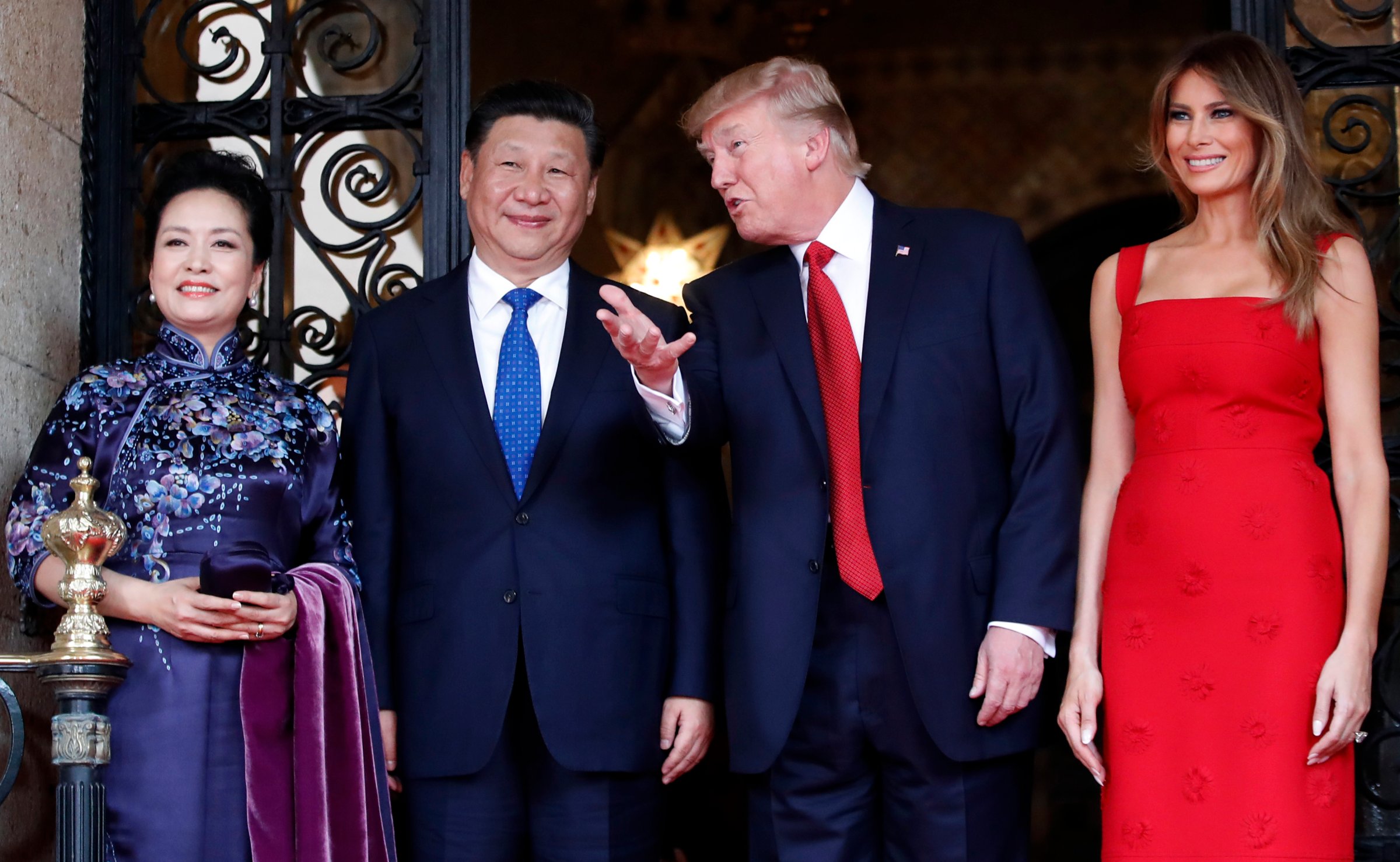
Expectations for this week’s Mar-a-Lago summit between U.S. President Donald Trump and his Chinese counterpart Xi Jinping are anything but great; simply getting through the 25 hours without incident would represent a significant foreign policy success. But there are plenty of obstacles ahead. Here are the biggest:
1. Trade
Let’s start with the elephant in the room. On the campaign trail, Trump proposed a 45% tariff on Chinese goods. The proposal provoked headlines and riled up Trump’s base, but then economists began to weigh in on the damage that would inflict. By the time Trump’s transition began, his team had swapped the proposal for a 10% tariff on imports across the board, one that’s not even China-specific. Since taking office, Trump’s team has de-emphasized this message altogether. U.S. sanctions targeting specific sectors would be the more likely gambit Trump would try.
Still, that hasn’t stopped the brash rhetoric; as late as January, Trump aides insisted that the U.S. would win a trade war with China. While very few people take these comments seriously, there are numbers out there that support that theory: Using Trump’s most extreme proposal, a 45% tariff would be expected to knock as much as 3% off China’s economy. But the move would also cause the cost of Chinese-made goods to surge 10% for U.S. consumers. This gets to the heart of the matter—while the U.S. may still have economic leverage over China, an authoritarian system of government can withstand a lot more economic pain than a fickle democratic one. Call it “mutually assured economic destruction.”
2. North Korea
Trump began this week by telling the Financial Times that “if China is not going to solve North Korea, we will.” If only it were that simple. For years, U.S. foreign policy toward North Korea has been anchored on the premise that Beijing is best placed to keep its ally in check. After all, North Korea gets 80% of its consumer goods and 45% of its food supply from China.
That’s why the U.S. is unlikely to corner North Korea without active Chinese support. But Trump won’t have much success at persuading Xi to shift his cautious approach, given that Korean turmoil represents a much threat to China than to the United States. A 2007 study estimated that if the DPRK imploded, as many as 3 million North Korean refugees would cross into China.
Yet Trump sees North Korea as an opportunity to prove his mettle in an area where his predecessors failed—with or without China. That, along with his comments this week in response to Pyongyang’s most recent missile launch, shows that Trump hopes to win some leverage on this issue ahead of the meeting with Xi.
3. Territorial disputes
The only subject more politically explosive than North Korea for the U.S.-China relationship is the future of Taiwan. Trump’s decision to accept a congratulatory call from the Taiwanese president shortly after winning the election is among the greatest threats the U.S.-China relationship has endured in nearly four decades; Xi refused to accept Trump’s call until the latter reaffirmed his commitment to Beijing’s long-standing “one China” policy. A surefire way for Mar-a-Lago to turn into a disaster is for Trump to openly question that in any way. Xi will probably look for Trump to reconfirm his commitment to “one China.”
There are plenty of other territorial disputes to get into, most notably in the South China Sea, where China’s expansive territorial claims at the expense of its smaller neighbors have drawn sharp U.S. criticism. Nearly one third of all maritime traffic passes through the sea, as does $1.2 trillion of bilateral trade with the U.S. If the U.S. cedes control of the South China Sea, Beijing will have tremendous economic leverage over it. But the U.S. is treaty-bound to defend the Philippines, a rival claimant, in any conflict with China should push come to shove between them. The two sides will continue to watch one another warily.
4. Cyberattacks
Given what’s transpired the past few months, it’s easy to forget that China, not Russia, was America’s principle cyber foe not too long ago. The April 2015 hacks of the Office of Personnel Management (OPM) are some of the most devastating hacks on record—an estimated 22.1 million Americans, 7 percent of the population, had personal records stolen. These records went well beyond social security numbers—the personal and romantic lives of millions of federal employees, documented for clearance purposes, are now thought to be in the hands of the Chinese. That’s a serious national security threat. The threat will continue for as long as those people work for the federal government.
As a businessman, Trump will also be concerned about state-sponsored corporate espionage. The U.S. loses some $400 billion from economic espionage through hacking annually—90 percent of that is believed to come from China. While there are more than enough geopolitical challenges for Trump and Xi to tackle, there are also significant bilateral challenges that make the prospect of any real breakthrough at Mar-a-Lago that much dimmer.
5. Their clash of personalities
Plenty has been written about how the vast differences between Trump and Xi in personality, experience, training, temperament, and worldviews make them a particularly odd couple. Trump speaks off the cuff. Xi measures his words with care (he has to, given that his comments are approved and monitored by Communist party officials back home). Trump speaks in Twitter bursts. Xi prefers 20-minute monologues. If you thought Trump looked uncomfortable while trying to listen patiently as other leaders speak, you haven’t seen anything yet.
More Must-Reads from TIME
- Cybersecurity Experts Are Sounding the Alarm on DOGE
- Meet the 2025 Women of the Year
- The Harsh Truth About Disability Inclusion
- Why Do More Young Adults Have Cancer?
- Colman Domingo Leads With Radical Love
- How to Get Better at Doing Things Alone
- Michelle Zauner Stares Down the Darkness
Contact us at letters@time.com